If you have faced situations where you cannot fall asleep properly or function correctly during the day due to your irresistible urge to move your legs abruptly, due to the strange sensations overflowing them, you have probably been exposed to the restless leg syndrome.
This condition appears often and bothers people to a serious extent, preventing them from relaxing or falling asleep, delivering a strange feeling of unease.

By definition, restless leg syndrome is a neurological disorder that manifests through the above-mentioned, uncomfortable sensations which mostly affect the legs, even though they might spread onto the arms or some other body parts. Most people characterize this condition as “an itch which cannot be scratched” making it even harder to deal with, leading to numerous lifestyle problems and complications.
Signs and Symptoms of Restless Leg Syndrome
Above all others, the RLS manifests through an unpreventable desire to move the affected body part. Keep in mind that this condition can affect people at any point of their lives, even during childhood, staying with them throughout adulthood too. Moreover, almost 50% of all RLS cases started experiencing the symptoms before they were 20 years old.
Speaking of symptoms, the urge for motion triggered by strange sensations affecting the limb in question is the main sign of RLS. Most commonly, victims of this syndrome cannot compare these sensations with any others, describing them as electrical, creepy, painful, pins and needles, itchy, or, simply, annoying.
Nevertheless, in some cases, people who experience RLS do so without being bothered by any other symptoms, just facing undesirable and uncontrollable movements.
Most commonly, upon moving the affected limb, the pain and irritation stop, triggering a sensation of relief and calmness. Sometimes, moving the affected limb in a specific position, varying from one individual to another, may keep the RLS at bay.
Again, depending on the individual, the symptoms of RLS may strike one either during the day or during the night. Furthermore, the symptoms may appear randomly or during specific situations. However, most RLS patients claimed that their symptoms typically appear during periods of their drowsiness, escalating during the night.
Prevention of Restless Leg Syndrome
The best way of preventing RLS is by identifying the cause behind it. Most treatments for this condition focus on relieving one of the symptoms, helping him/her keep the condition as passive as possible, and improving his/her quality of life this way.
If the underlying cause of this condition is found and diagnosed, its treatment should result in the cessation of RLS as well. However, there are also drug treatments for RLS which are known to trigger more side effects than actual benefits, being quite expensive at the same time. Hence, this method of treatment is advised to be avoided.
Since RLS is known to be caused by certain health problems such as anemia, iron deficiency, thyroid, and vein problems, these are ruled out before any other treatments engage. Of course, if any of these conditions are diagnosed during the process, their treatment removes the RLS.
Taking into consideration that fatigue worsens the RLS or leads to its escalation, finding relaxation through warm baths, meditation, yoga or any other methods which work for you can all help you prevent the onset of the symptoms of this condition.
Stretching your limbs may improve the blood circulation in the area and hot showers are also known to be beneficial for preventing and dealing with RLS. Alternatively, taking iron supplements will be the cure for you, if your organism lacks iron.
Prognosis of Restless Leg Syndrome
Commonly, the symptoms of RLS are likely to get worse as you get older, especially if this condition is not triggered by any underlying health problems. Naturally, due to the characteristics of RLS, it may allow the sufferers not to experience any symptoms during some periods of their lives, only to be constantly affected by them at some other points. Learning how to deal with your type of RLS, therefore, is the best possible step to take. Also, do not neglect the possibility of the presence of yet another neurological disorder behind your RLS.
Today, up to 10% of people from North America and Europe suffer from RLS. Additionally, 2.7% of all these individuals are bound to suffer from its symptoms on a daily basis. Moreover, according to some scientific statistical research, RLS is twice as common in women than it is in men and Caucasian people are more prone to them than those of African or African-American descent.
People who are likely to suffer from RLS are mostly those who are already suffering from iron deficiency, renal diseases, and certain neurological problems. However, pregnant women are known to be prone to RLS too.
Finally, about 90% of people with RLS actually suffer from a periodic limb movement disorder, leading to sudden body part jerks occurring during sleep.
All in all, restless leg syndrome can be quite a bothersome condition, leading to annoying, intolerable strange sensations affecting the limbs, most commonly legs, preventing people from sleeping and functioning correctly.
Due to the fact that many underlying causes may be behind this condition, it is best to seek medical assistance once you experience frequent and severe manifestations of this syndrome.
- The prevalence of RLS among the 202 participants was 24 (11.9%).
- Among them, 5 were already diagnosed with RLS. Their mean age at onset was 40.4?±?25.3 years. Among the rest 197 participants, 19(9.6%) were newly diagnosed with RLS.
- The severity of RLS was mild, moderate and severe among 7(36.8%), 9(47.4%) and 3(15.8%) participants, respectively. Five (26.3%) of the 19 newly diagnosed participants were identified as RLS sufferers. In multivariable analysis, the presence of diabetes mellitus and family history of RLS were associated with the presence of RLS among the participants.
- The mean Global PSQI value was 5.0?±?3.1. Sleep latency was prolonged (p?=?0.001), and sleep disturbances (p?=?0.01) were higher among participants newly diagnosed with RLS (n?=?19) compared to those without RLS (n?=?178).
- Subjective sleep quality was poor (p?=?0.038), and sleep disturbances (p?=?0.016) were more among participants with severe degree RLS.



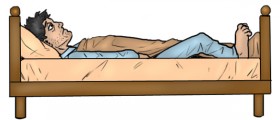
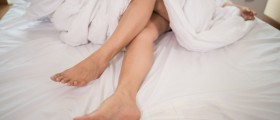
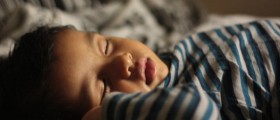





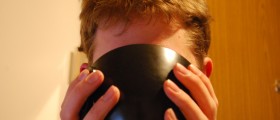


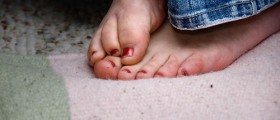

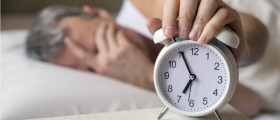
Your thoughts on this
Loading...